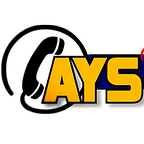APPNOLOGY 101, PART 3: “Symmetry”
Likely, 70–80% of all the components and protocols required to run a transportation service are interchangeable. It is the 20–30% that makes all companies unique. The primary percentage of that percentage is how and when the following days or future orders are covered, distributed, or dealt with. Much of the coverage is based on obvious metrics. Type of vehicle. Location of order or driver. Availability of driver scheduling versus vehicle availability as well.
So often there is a certain euphoric feeling when all the pieces fit together. Everyone is accounted for. Nobody is scheduled too tight. The weather report looks friendly. What could go wrong. Simple answer. Everything!!
Car 1 breaks down, driver 91 has a mental breakdown, and account 101 decides to extend the charter because the meeting went overtime and wants to treat the staff to dinner.
You need help, and you need to get it from an outsider. You resort to your lie list. Most agencies call it a farm out list, but I don’t buy that. It is tantamount to a dispatch air guitar. Greg, I need any kind of car at Teterboro asap, PLEASE, do you have anything. Greg says hold on let me check.
What Greg is really checking is did the deli put brown mustard on his corned beef sandwich instead of yellow. Once confirmed he says “I am sorry” I just don’t have anything for hours. I am also sure some of you have also played the (make noise) on the keyboard sound while pretending to check.
Now, don’t get me wrong, there are fine dispatchers out there who will genuinely strive to help a working partner knowing that the favor will be returned. Problem is it isn’t always being lazy or not wanting to help. It could be trying to do some advance scheduling, paperwork or having an extra bullet in your chamber just in case.
The main problem is it is too labor intensive to go through the coverage dance. Now let’s turn things around. I claim, I affirm, I will bet anyone that 99.9% of the time an operator is in need, there is a vehicle available who would welcome the order. The key which will drive our network is the ability to use automation like UBER, but find it quicker, faster, and more efficiently and absolutely more profitable.
Step one or the Alpha stage is to establish basic operational guidelines that all member companies would adhere to. Some of the obvious is the vetting and inventorying of affiliates and partners on minimally 4 tiers. Local, Statewide, Nationwide, and worldwide. BTW, overlapping duplicity is de rigueur.
After extensive study, research, and experience I have determined that broadcasting one’s need is the fastest way to reach the largest potential coverage audience. If GPS says car 12 is closest that may be irrelevant because car 12 may have other plans or ideas.
Everyone broadcasts information one way or another these days. Sending out a group email is a form of broadcasting. Marketing to your clients with a program such as Constant Contact or Mailchimp is broadcasting. Everyone has a message and there are hundreds of platforms and solutions to distribute such.
Even Twitter and Facebook have features and options to accomplish this. Two of my personal favorites are Inforad and Notepager. Email groups with blind copy utilization also works fine. It is also important to decide amongst the group whether there should be a secondary broadcast when the order is covered so members can carry on.
The foundation I am hoping to help establish is to develop framework that all companies will want to work with. A framework that they can utilize to run their first tier fleet and staff yet intertwine with the network mother ship. In effect, if it is more effective than one’s current dispatch protocol. Then we wind up with well over 500 national transportation services operating in complete symmetry that can later be integrated into a massive user-friendly app.
At its basic core I have only described our hopeful journey to second base. It is complex, yet simple in a basic way. Our next chapter will touch on more precise techniques that can make this program a winner and industry savior.
